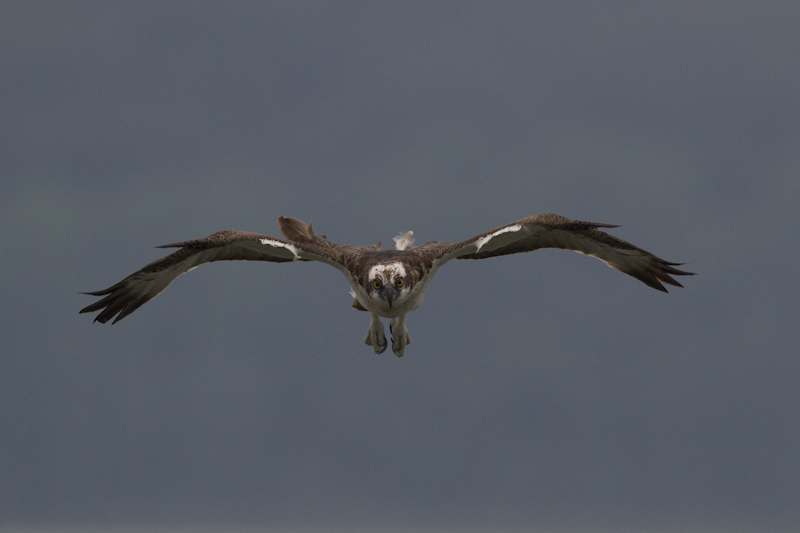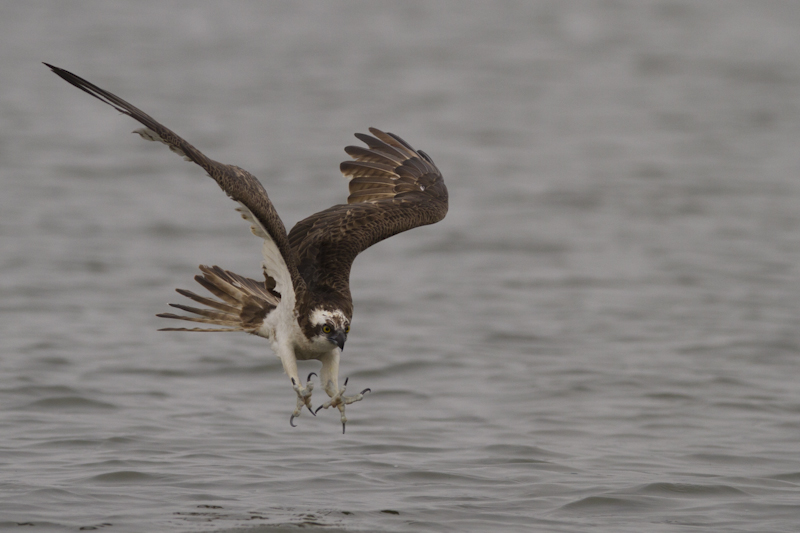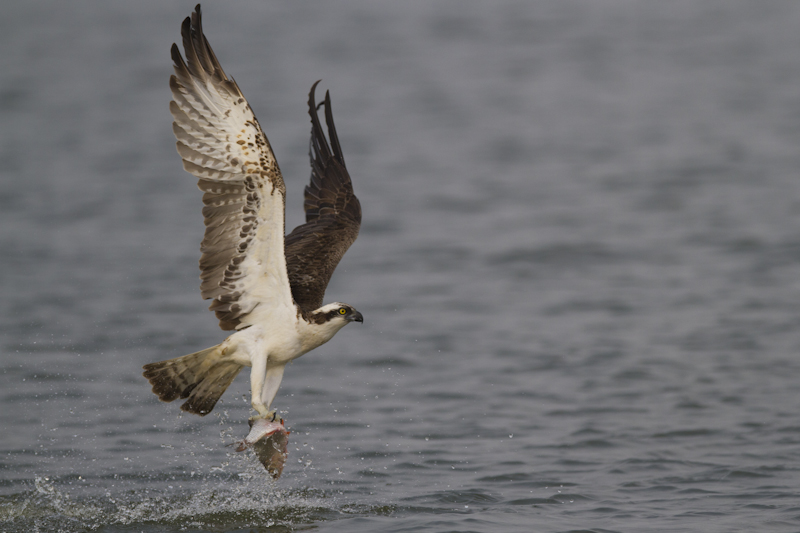Most Scandinavian photographers go to Kangasala in Finland in order to photograph fishing ospreys from the hides there. A fabulous place for photography! The ospreys there visit the fish ponds several times each day and catch the farmed rainbow trout from the ponds. Rainbow trout is an introduced fish species from north America that now occurs even in many natural waters in Scandinavia. The photographs from Kangasala are often breathtaking, showing ospreys at close range with a rainbow trout in the talons and millions of water droplets in the air when the osprey is taking off from the water surface. But all the photographs that are taken by the visiting photographers, they all look very much alike and very much mirror an ongoing trend in european and Scandinavian wildlife photography: The trend to go to the same places and to take the same shortcuts to nice photographs and therefore – more or less to get the same photographs.
It seems that Scandinavian wildlife photography is becoming mainstream, even though at a very high level. Many professional photographers go to the same perfectly directed rented hides. And all get very similar photographs of white-tailed eagles, golden eagles, brown bears, great grey owls and many other species. If being viewed individually, all those photographs are great. The only problem is that there are hundreds of very similar (great) photographs of the same animals. So if anyone shows a great photograph of a fish catching white-tailed eagle, most photographers will immediately know, where the photograph was taken, how much the photographer has paid to take the photograph. And many photographers will probably have similar photographs in their archives. There are hardly any surprises in todays wildlife photography.
But what happened to creativity? What happened to the individual photographers’ unique approach to take unique photographs? Are we all ending up in taking the same photographs from the same rented hides? Are we wildlife photographers losing our creativity because we have to take fast shortcuts in order to get value for our money? And let’s face it. Even if we operate our own camera in a rented hide, some other guy will be the director of our photographs. It is the guy who has built the hide, who has set up the requisites and who has attracted the animals, who actually deserves the credits for all the fantastic photographs from that spot. The owner of the hide is the director who owns a theatre, an animal theatre – the photographers are just the journalists who report about the play. But the director is never mentioned when the photographs are published.
I believe that it is important that we run our own projects, to use our own fantasy, imagination and creativity and not just all go to the well known rented hides. Nothing bad about rented hides. They are a great opportunity and often very well created. But wildlife photography needs more than rented hides only. We need to a higher extend our own projects, our own creativity. Creativity is a huge driving force and will make sure that wildlife photography will be surprising, even in the future. For many years, I have tried to do my own photographic projects now. Kingfishers, owls, drinking pools, eagles, bats and some more. They are time-consuming, yes. And some did fail, others did succeed. Some went well, others were fought back and suppressed by people with other interests. But in the end, they were all worth the effort. They resulted in photographs that were different from the rest. I believe that your own, personal and unique project will help you to become a better photographer. All the obstacles that you have to tear down to complete your project, they will teach you a lot.
Well, here are some photographs from my osprey photography – my personal one. They are more than just nice photographs, more importantly, they are different photographs from all the photographs that were taken from the same rented osprey-hides in Scandinavia.

Osprey, Canon EOS 7D, EF300mm f/2.8L IS USM, f 3.2, 1/3200s, ISO 400, handheld. Sweden. Photograph: Felix Heintzenberg

Osprey, Canon EOS 7D, EF300mm f/2.8L IS USM, f 3.2, 1/3200s, ISO 400, handheld. Southern Sweden. Photograph: Felix Heintzenberg

Osprey, Canon EOS 7D, EF300mm f/2.8L IS USM, f 3.2, 1/4000s, ISO 400, handheld. Southern Sweden. Photograph: Felix Heintzenberg
